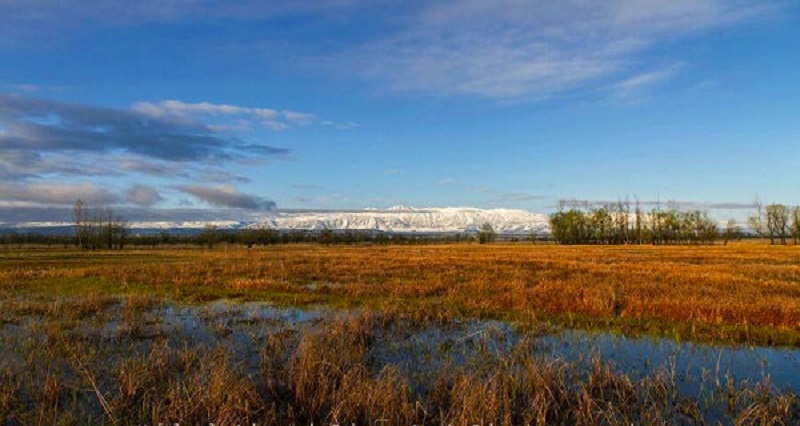
Srinagar- The High Court of J&K and Ladakh has sought suggestions with regard to certain alleged violations and encroachments in Ramsar Wetland sites in Jammu and Kashmir.
Hearing a suo-moto Public Interest Litigation (PIL) on the directions by the Supreme Court, a bench of Chief Justice N. Kotiswar Singh and Justice Moksha Khajuria Kazmi asked Nadeem Qadri, Amicus Curiae, to submit the suggestions along with his views on the report submitted by the Wild Life Warden, Kashmir Region Srinagar.
Earlier Amicus Curiae submitted that the report submitted by Wild Life Warden is quite comprehensive and voluminous to which he seeks time to file views on the same.
There are five wetlands covered under the Ramsar Convention on Wetlands in J&K and include Hokersar, Wular Lake, Shalbugh and Haigam in Kashmir Valley besides Surinsar-Mansar Lake Jammu.
Among others, the Wild Life Warden submitted that Wetlands should be conserved by ensuring their wise use. “Wise use is defined as ‘sustainable utilization for the benefit of mankind in a way compatible with the maintenance of the natural properties of the ecosystem Sustainable utilization is understood as ‘human use of a wetland so that it may yield the greatest continuous benefit to present generations while maintaining its potential to meet the needs and aspirations of the future generations,” he said, adding, “‘Wise use’ may also require strict protection.
The Warden also informed that the Demarcation of the Wular Lake has been carried out and 1159 concrete boundary pillars have been fixed all over the periphery of the Lake. “An area of 4.35 Sqkm of critically silted area of lake stands restored by removing 72.80 Lac cum of silt from Wular Lake.” He said that the present dredging operations are carried out using modern and hi-tech machines such as Cutter Suction Dredgers for efficient, fast, and quality dredging from Wular lake. “Under Willow Action Plan 1.20 Lac willows have been removed from Lake for its eco-restoration generating a revenue of 24.35 crore.”
Besides this, the Warden said, the choked feeder channel (Naaz Nallah, having a total length of approximately 6.00kms) stands completely de-silted, cleaned, and restored back to its original course, thus restoring hydrological connectivity between Wular Lake and MalgamRakh
Regarding afforestation of badly degraded catchment areas, the Warden said that approximately 16.76 lac saplings (both conifer and broadleaved species) for mass greening of the denuded hill in Erin and Madhumati Watersheds. “Fodder development and energy plantations too have been raised in the target areas falling under the catchment areas besides large-scale vegetative and engineering measures stand taken to prevent and control soil erosion in these areas.”
For biodiversity conservation, he said, focus has been given to conservation of wildlife within and outside the Wular lake.
The High Court, following the directions by the Supreme Court on 3 April 2017, had treated an affidavit filed by the petitioner M K Balakrishnan before the apex court regarding certain wetlands which were covered under the Ramsar Convention on Wetlands as PIL.
The Top Court had asked the Chief Justices of the concerned High Courts to treat the affidavit as a suo moto PIL and, if necessary, appoint an amicus curiae to assist the court so as to ensure that the Ramsar Convention sites within their jurisdiction were properly maintained.
The High Court pursuant to the directions registered the affidavit as PIL on its own motion and in its first order on the PIL on 28 August 2018, underlined that the “importance of preservation of Wetlands and Water Bodies cannot be sufficiently emphasized as well as the need to set up a regulatory mechanism for all wetlands so as to maintain their ecological character and ultimately support their integrated management in the three regions of the (then) State (Kashmir, Jammu and Ladakh).”
Follow this link to join our WhatsApp group: Join Now
Be Part of Quality Journalism |
Quality journalism takes a lot of time, money and hard work to produce and despite all the hardships we still do it. Our reporters and editors are working overtime in Kashmir and beyond to cover what you care about, break big stories, and expose injustices that can change lives. Today more people are reading Kashmir Observer than ever, but only a handful are paying while advertising revenues are falling fast. |
| ACT NOW |
| MONTHLY | Rs 100 | |
| YEARLY | Rs 1000 | |
| LIFETIME | Rs 10000 | |










